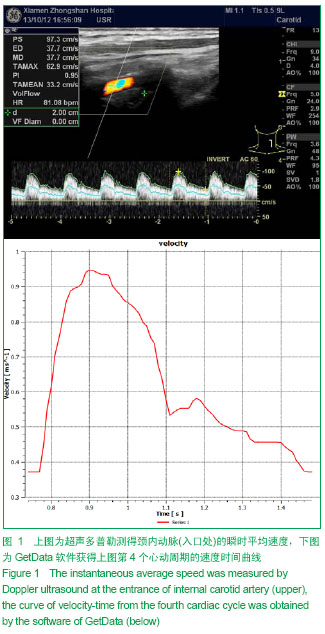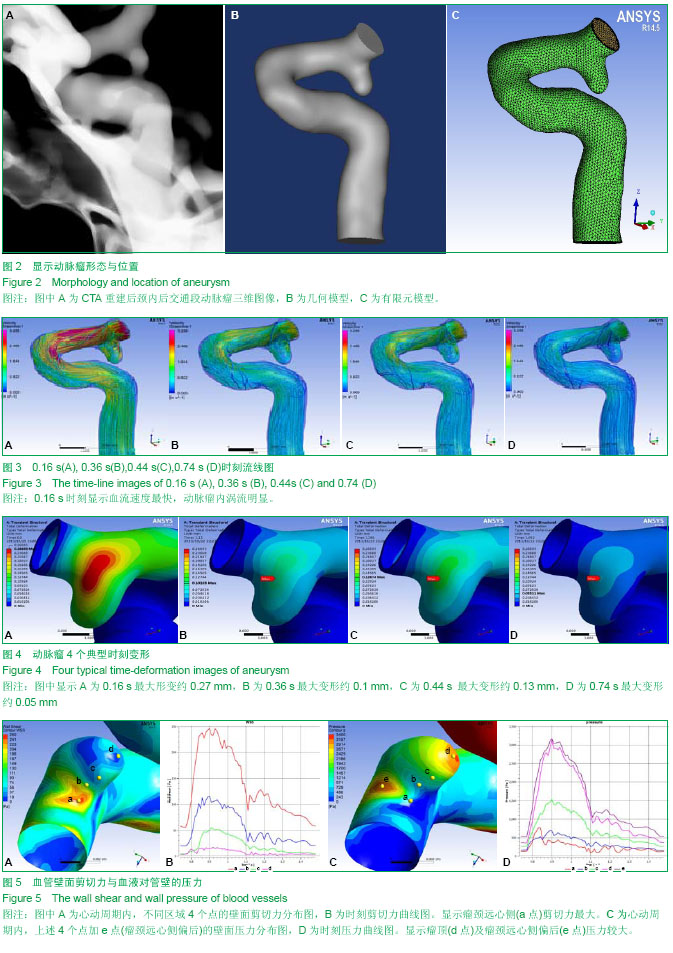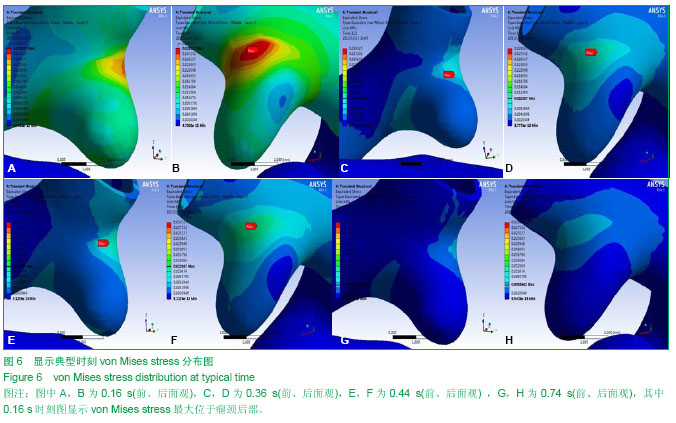| [1] 梁长虹,赵振军.多层螺旋CT血管成像[M].北京:人民军医出版社,2008:121-122.[2] 薛庆澄.神经外科学[M].天津:天津科学技术出版社,1990: 350-370.[3] Pierot L, Spelle L, Vitry F,et al.Similar safety in centers with low and high volumes of endovascular treatments for unruptured intracranial aneurysms: evaluation of the analysis of treatment by endovascular approach of nonruptured aneurysms study.AJNR Am J Neuroradiol. 2010;31(6): 1010-1014. [4] Alnaes MS, Isaksen J, Mardal KA,et al.Computation of hemodynamics in the circle of Willis.Stroke. 2007;38(9): 2500-2505.[5] Cebral JR, Sheridan M, Putman CM.Hemodynamics and bleb formation in intracranial aneurysms.AJNR Am J Neuroradiol. 2010;31(2):304-310. [6] Karmonik C, Yen C, Diaz O,et al.Temporal variations of wall shear stress parameters in intracranial aneurysms--importance of patient-specific inflow waveforms for CFD calculations.Acta Neurochir (Wien). 2010;152(8): 1391-1398.[7] 于红玉,李海云,张莹,等.颅内动脉瘤3D几何模型建立方法的研究[J].计算机工程与应用,2008,44(17):175-177.[8] Meng H, Wang Z, Hoi Y, et al.Complex hemodynamics at the apex of an arterial bifurcation induces vascular remodeling resembling cerebral aneurysm initiation.Stroke. 2007;38(6): 1924-1931. [9] 陈珍,袁奇,朱光宇,等.颈内动脉狭窄时Willis环的血液动力学数值模拟[J].西安交通大学学报,2009,43(10):119-123.[10] Castro MA, Putman CM, Sheridan MJ,et al.Hemodynamic patterns of anterior communicating artery aneurysms: a possible association with rupture.AJNR Am J Neuroradiol. 2009;30(2):297-302.[11] Cebral JR, Mut F, Weir J,et al.Quantitative characterization of the hemodynamic environment in ruptured and unruptured brain aneurysms.AJNR Am J Neuroradiol. 2011;32(1): 145-151. [12] Goubergrits L, Schaller J, Kertzscher U,et al.Statistical wall shear stress maps of ruptured and unruptured middle cerebral artery aneurysms.J R Soc Interface. 2012;9(69):677-688. [13] Aenis M, Stancampiano AP, Wakhloo AK,et al.Modeling of flow in a straight stented and nonstented side wall aneurysm model.J Biomech Eng. 1997;119(2):206-212.[14] Tsuzuki K, Hasegawa H, Ichiki M,et al.Optimal region-of- interest settings for tissue characterization based on ultrasonic elasticity imaging.Ultrasound Med Biol. 2008;34(4): 573-585. [15] Leach JR, Rayz VL, Soares B,et al.Carotid atheroma rupture observed in vivo and FSI-predicted stress distribution based on pre-rupture imaging.Ann Biomed Eng. 2010;38(8):2748-2765. [16] Frösen J, Piippo A, Paetau A,et al.Remodeling of saccular cerebral artery aneurysm wall is associated with rupture: histological analysis of 24 unruptured and 42 ruptured cases.Stroke. 2004;35(10):2287-2293.[17] Vorp DA, Vande Geest JP.Biomechanical determinants of abdominal aortic aneurysm rupture.Arterioscler Thromb Vasc Biol. 2005;25(8):1558-1566.[18] Perktold K, Peter R, Resch M.Pulsatile non-Newtonian blood flow simulation through a bifurcation with an aneurysm. Biorheology. 1989;26(6):1011-1030.[19] Ernemann UU, Grönewäller E, Duffner FB,et al.Influence of geometric and hemodynamic parameters on aneurysm visualization during three-dimensional rotational angiography: an in vitro study.AJNR Am J Neuroradiol. 2003;24(4):597-603.[20] Shojima M, Oshima M, Takagi K,et al.Role of the bloodstream impacting force and the local pressure elevation in the rupture of cerebral aneurysms.Stroke. 2005;36(9):1933-1938. [21] Cantón G, Levy DI, Lasheras JC,et al.Flow changes caused by the sequential placement of stents across the neck of sidewall cerebral aneurysms.J Neurosurg. 2005;103(5): 891-902. [22] 温功碧,李俊修,陈伟.颅内动脉旁瘤的血液动力学的三维数值模拟[J].北京大学学报:自然科学版,2003,39(5):649-654.[23] Perktold K, Rappitsch G.Computer simulation of local blood flow and vessel mechanics in a compliant carotid artery bifurcation model.J Biomech. 1995;28(7):845-856.[24] 顾媛,郦明阳,沈力行,等.狭窄动脉流固耦合模型Ansys/CFX数值的有限元分析[J].中国组织工程研究与临床康复,2008, 12(52): 10293-10296.[25] 李良,张莹,陈家亮,等.未破裂颈内动脉侧方动脉瘤的血流动力学特点对比分析[J].中华神经外科杂志,2012,28(3):256-259.[26] 任国荣,姜平,曹枭强,等.基于CT的三维颈内动脉瘤手术前后的血流动力学分析[J]. 介入放射学杂志,2013,22(10):825-829.[27] Patti J, Viñuela F, Chien A.Distinct trends of pulsatility found at the necks of ruptured and unruptured aneurysms.J Neurointerv Surg. 2013. [Epub ahead of print][28] Chien A, Sayre J, Viñuela F.Quantitative comparison of the dynamic flow waveform changes in 12 ruptured and 29 unruptured ICA-ophthalmic artery aneurysms.Neuroradiology. 2013;55(3):313-320. [29] Fukazawa K, Ishida F, Umeda Y,et al.Using Computational Fluid Dynamics Analysis to Characterize Local Hemodynamic Features of Middle Cerebral Artery Aneurysm Rupture Points.World Neurosurg. 2013. pii: S1878-8750(13)00277-5. [30] Paszkowiak JJ, Dardik A.Arterial wall shear stress: observations from the bench to the bedside.Vasc Endovascular Surg. 2003;37(1):47-57.[31] Reneman RS, Arts T, Hoeks AP.Wall shear stress--an important determinant of endothelial cell function and structure--in the arterial system in vivo. Discrepancies with theory.J Vasc Res. 2006;43(3):251-269. [32] Rayz VL, Boussel L, Ge L,et al.Flow residence time and regions of intraluminal thrombus deposition in intracranial aneurysms.Ann Biomed Eng. 2010;38(10):3058-3069. [33] Tateshima S, Chien A, Sayre J,et al.The effect of aneurysm geometry on the intra-aneurysmal flow condition. Neuroradiology. 2010;52(12):1135-1141.[34] Boussel L, Rayz V, McCulloch C,et al.Aneurysm growth occurs at region of low wall shear stress: patient-specific correlation of hemodynamics and growth in a longitudinal study.Stroke. 2008;39(11):2997-3002. [35] Hassan T, Timofeev EV, Saito T, et al.Computational replicas: anatomic reconstructions of cerebral vessels as volume numerical grids at three-dimensional angiography.AJNR Am J Neuroradiol. 2004;25(8):1356-1365.[36] Castro MA, Putman CM, Cebral JR.Computational fluid dynamics modeling of intracranial aneurysms: effects of parent artery segmentation on intra-aneurysmal hemodynamics.AJNR Am J Neuroradiol. 2006;27(8): 1703-1709.[37] 张炘,段传志,李铁林,等.切应力在血流动力学因素影响颅内动脉瘤形成和破裂中的作用[J].介入放射学杂志,2011,20(4): 319-324. [38] 吴明星,张东,张岩,等.颅内动脉瘤壁细胞凋亡观察[J].山东医药, 2009,49(10):24-25.[39] 李文彬,袁伟,李建伟,等.犬囊状动脉瘤模型的DSA和病理研究[J].临床与实验病理学杂志,1997,13(4):351-354.[40] Omodaka S, Sugiyama S, Inoue T,et al.Local hemodynamics at the rupture point of cerebral aneurysms determined by computational fluid dynamics analysis.Cerebrovasc Dis. 2012; 34(2):121-129. [41] Rayz VL, Boussel L, Acevedo-Bolton G,et al.Numerical simulations of flow in cerebral aneurysms: comparison of CFD results and in vivo MRI measurements.J Biomech Eng. 2008; 130(5):051011. [42] 张驰,韩景芸,蒲放,等.颈内动脉虹吸部血流的数值计算与模型实验[J].医用生物力学,2013,28(1):56-62.[43] 李艳,傅津津,李科,等.经颅多普勒对高脂血症患者脑血流动力学的分析[J].中南大学学报,2012,37(3):256-259.[44] 王嵩,夏爽,李牧,等. 联合CTA、CT灌注成像评价颅内外血管搭桥前后脑血流动力学的变化[J].中国老年学杂志,2012,32(4): 827-828.[45] 罗永超,李克强,陶庆林,等.128层螺旋CT 脑灌注成像联合CT 血管造影对超早期脑梗死区域血流动力学研究[J].现代诊断与治疗,2013,24(9):1941-1942.[46] 林颖,孔丽,戴加飞,等.颈内动脉狭窄患者脑血管储备能力的研究[J].中华老年心脑血管病杂志,2013,15(4):379-381.[47] Sato K, Kurata A, Oka H,et al.Signal Intensity Changes for the Middle Cerebral Artery on 3-Dimensional Time-of-flight Magnetic Resonance Angiography Indicate Acute Hemodynamic Changes after Carotid Endarterectomy.J Stroke Cerebrovasc Dis. 2013;22(8):e511-515. [48] Purvis DL, Crutchfield K, Trickey AW,et al. Transcranial Doppler investigation of hemodynamic alterations associated with blunt cervical vascular injuries in trauma patients.J Ultrasound Med. 2013;32(10):1759-1768. |


